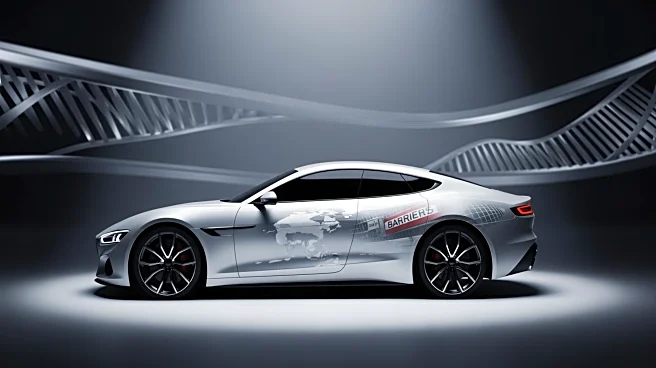What's Happening?
Daimler Truck has announced a significant 40% drop in its third-quarter operating profit, primarily attributed to a weaker truck market in North America. The company's adjusted earnings before interest and taxes (EBIT) for the September quarter amounted
to 716 million euros, which fell short of the 729 million euros anticipated by a company-compiled consensus. Despite the overall decline, the Trucks North America segment experienced a 64% reduction in operating profit, reaching 257 million euros, yet it surpassed the consensus expectation of 240 million euros. Daimler Truck has maintained its full-year forecast despite these challenges.
Why It's Important?
The decline in Daimler Truck's operating profit highlights the ongoing challenges faced by the automotive industry, particularly in the North American market. This downturn could have broader implications for the U.S. economy, affecting employment and investment in the sector. The performance of Daimler Truck is a key indicator of the health of the commercial vehicle market, which is crucial for logistics and transportation industries. A sustained weakness in this market could lead to reduced demand for new trucks, impacting manufacturers, suppliers, and related businesses.
What's Next?
Daimler Truck's confirmation of its full-year forecast suggests that the company is optimistic about potential recovery or stabilization in the coming months. Stakeholders will be closely monitoring any strategic adjustments or market developments that could influence the company's performance. The North American market's response to economic conditions, such as interest rates and consumer demand, will be critical in determining future profitability for Daimler Truck and similar companies.
Beyond the Headlines
The decline in operating profit may prompt Daimler Truck to explore cost-cutting measures or strategic partnerships to mitigate the impact of market weakness. Additionally, the company might focus on innovation and sustainability to enhance its competitive edge in a challenging environment. The broader implications for the automotive industry could include shifts towards electric vehicles and alternative energy sources as companies seek to adapt to changing market dynamics.














